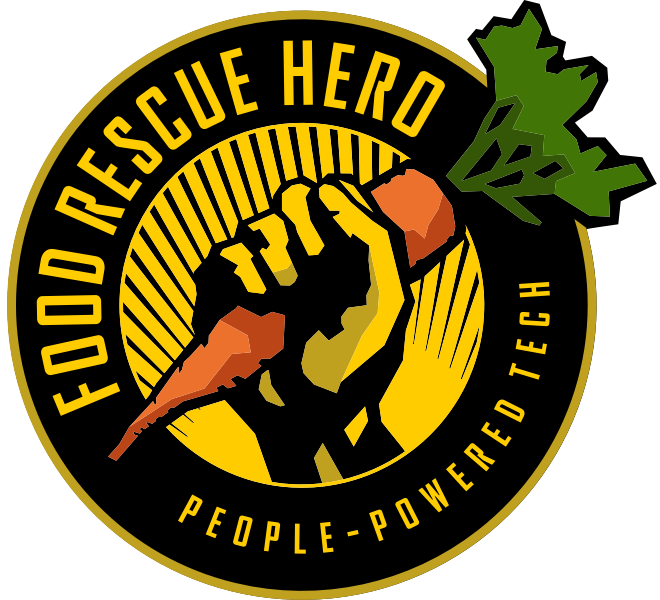We like big data and we cannot lie. For food rescue organizations, data can guide strategic decisions to improve outcomes and increase impact.
In our August webinar, Sean Hudson, Director of Data Analytics at Food Rescue Hero, shared valuable insights on how data can be used to enhance the efficiency of food rescue operations, improve decision-making, and help organizations scale their impact.
Watch our August 2024 webinar:
"Optimizing Efficiency in Food Rescue Operations"
Case Study: The Importance of Context in Data Analysis
A recent data anomaly at 412 Food Rescue demonstrated the importance of analyzing data in context. The organization noticed an unexpected drop in recurring food rescues from May to June. The assumption might be that something was “wrong” but after investigating, they found that the drop was due to a difference in the number of weekdays available for rescues in June, not a decrease in donations or volunteer activity.
This case study highlights the need to consider factors like seasonality, scheduling patterns, and data integrity when interpreting rescue data.
The Power of Recurring Rescues in Scaling Operations
Recurring rescues—regularly scheduled food donations from consistent donors like grocery stores, bakeries, or restaurants—are crucial for scaling a food rescue organization. These rescues require less time and labor compared to one-off rescues, which can be time-consuming to coordinate. At 412 Food Rescue, approximately 90% of rescues are recurring, enabling the organization to maintain a high volume of food recovery. By cultivating strong relationships with donors, food rescue organizations can maximize their impact while minimizing resource use.
Strategies for Optimizing Volunteer and Dispatch Operations
Dispatchers play a key role in coordinating with both donors and recipient organizations to ensure efficient food rescue and distribution. However, relying too heavily on manual coordination can restrict an organization’s ability to grow. To mitigate this, Food Rescue Hero uses technology to streamline communication and automate recurring processes. Tools like apps and mapping software help optimize routes, automate rescues, and reduce the administrative workload on dispatchers and volunteers, paving the way for scalability.
Data-Driven Decision-Making for Sustainable Growth
Using data effectively can guide strategic decisions that improve food rescue outcomes. For example, analyzing metrics such as “food per mile” can help organizations assess their carbon footprint and make environmentally conscious decisions. By setting benchmarks based on data, food rescue organizations can prioritize goals such as reducing food miles, increasing volunteer engagement, or minimizing food waste, leading to more sustainable growth.
The Value of Small Rescues and Non-Traditional Partnerships
While large-scale rescues from major donors are often prioritized, small, local rescues can have a significant impact. Even small amounts of rescued food can be life-changing, such as providing a meal for homeless youth. Additionally, building a network of non-traditional recipient organizations, like community centers and housing authorities, can help expand an organization’s capacity to distribute food more effectively and reach underserved populations.
Continuous Learning and Adaptation
To remain effective and responsive to changing needs, food rescue organizations must continually learn from their data and adjust their strategies. Regularly analyzing rescue patterns, volunteer feedback, and environmental impact enables organizations to stay agile and efficient. By focusing on recurring rescues, optimizing volunteer and dispatch operations, and making data-driven decisions, food rescue organizations can better serve their communities and contribute to a more sustainable and equitable food system.
Conclusion
Incorporating data-driven strategies and leveraging technology can significantly enhance the efficiency and impact of food rescue operations. By building strong partnerships, optimizing operations, and continuously learning from data, food rescue organizations can expand their reach, reduce food waste, and better address food insecurity in their communities.
Key Takeaways:
- Look beyond the numbers: Contextualize data by comparing it to relevant time periods and trends to identify real patterns and outliers.
- Focus on building recurring partnerships: Cultivating strong, ongoing relationships with food donors and recipient organizations is crucial for scaling food rescue operations sustainably.
- Leverage technology for efficiency: Use tools like apps and mapping software to optimize routes, automate recurring rescues, and reduce the administrative burden on dispatchers and volunteers.
- Set clear goals and benchmarks: Define what success looks like for your organization (more food rescued, fewer emissions, or lower costs) and use data to measure progress and make informed adjustments.
- Don’t overlook small rescues: Small rescues can fill important gaps and provide food to hard-to-reach populations. Building a diverse network of partners can enhance food distribution efficiency and equity.
- Adapt and innovate: Regularly revisit data and operations to find new opportunities for growth and improvement. Embrace technology and innovative practices to stay ahead.









